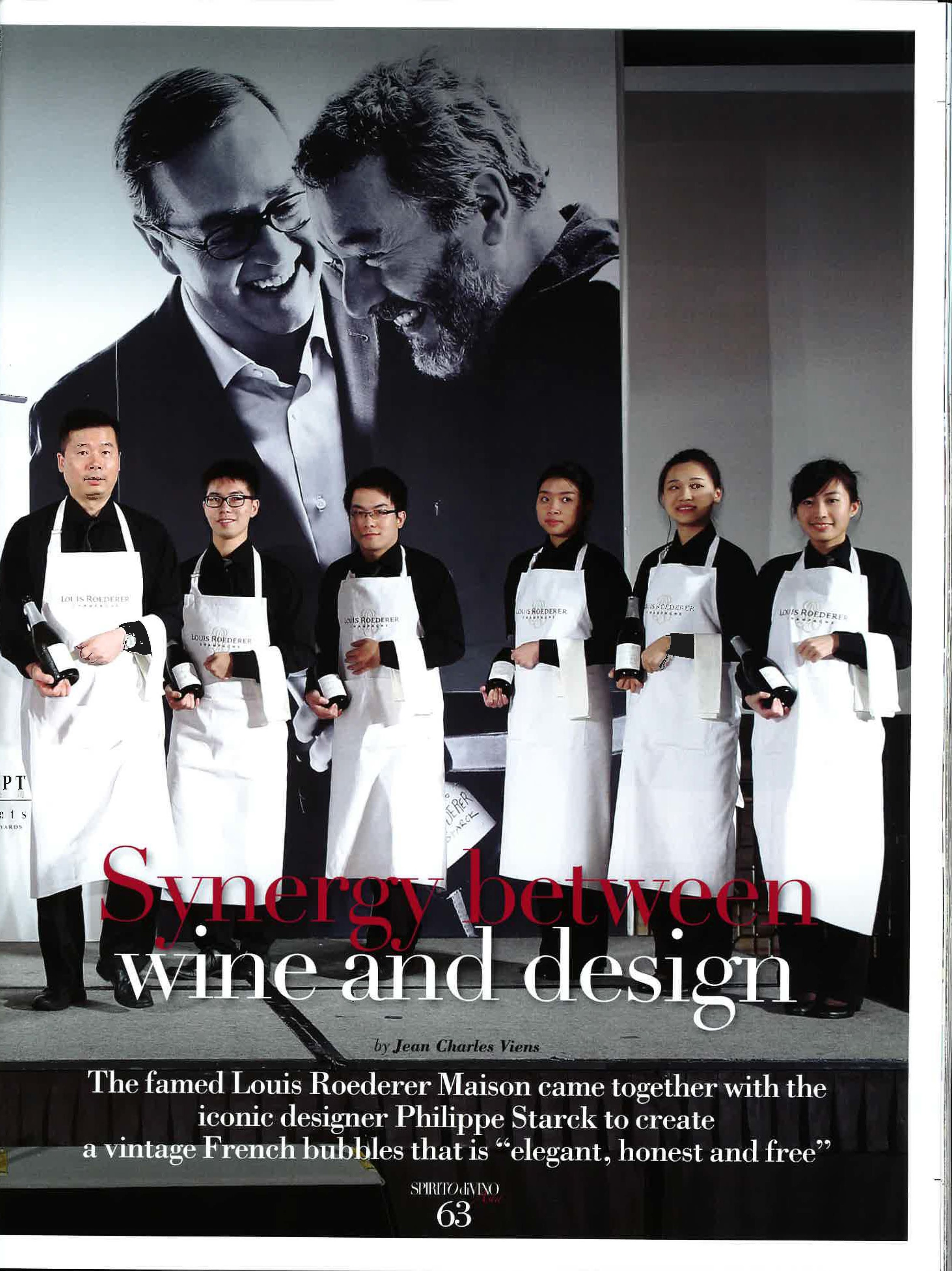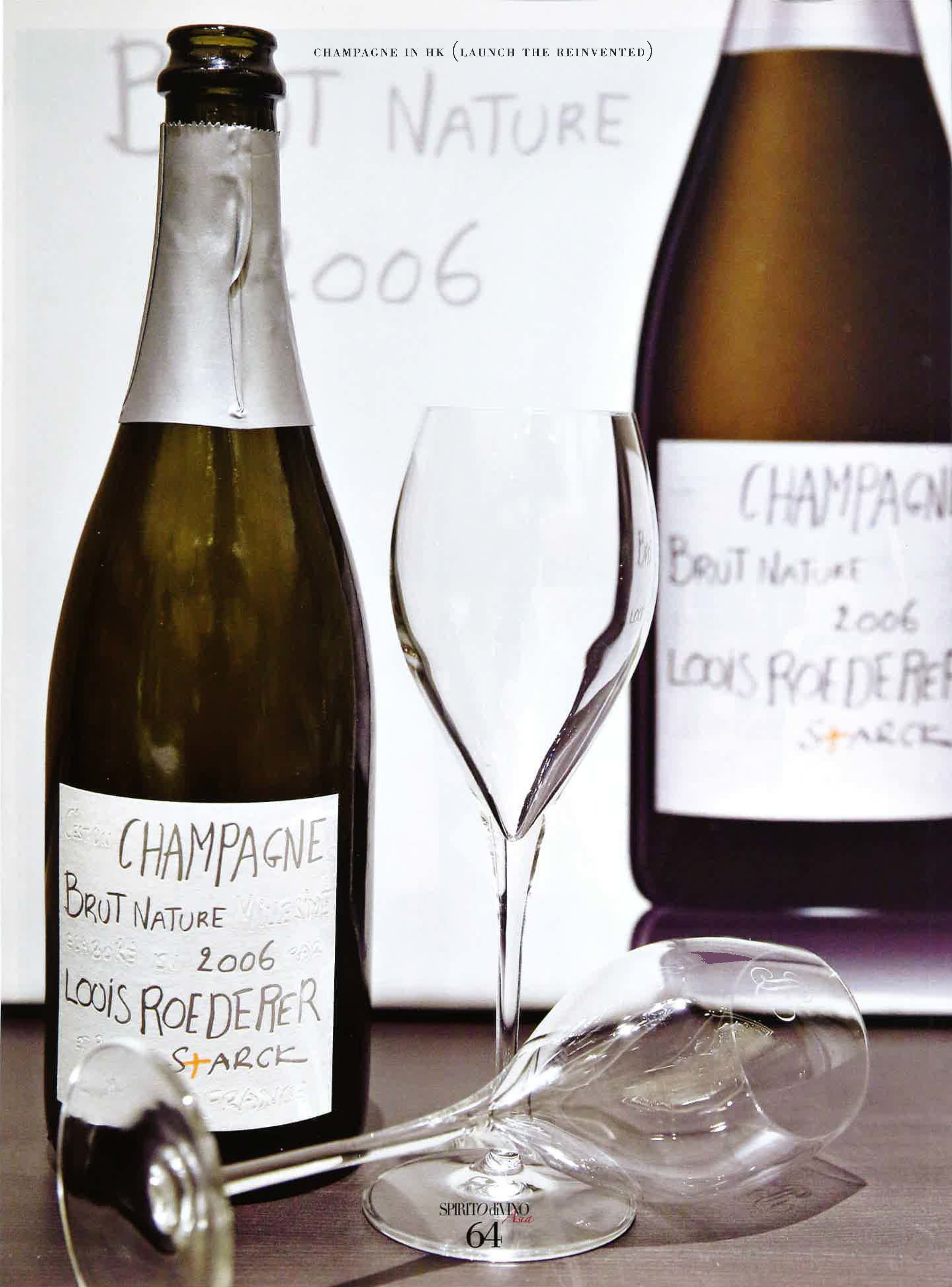Synergy Between Wine & Design - My Latest Article In Spirito di Vino Asia...
Reproduced from Year 3, Issue #13 of Spirito di Vino Asia...
For Philippe Starck, “the beauty of Champagne is that, before being a wine, it is firstly an idea, an intention… it is a project”. And so the tone was set for the collaboration between this iconic French designer and the famed Champagne House Louis Roederer to create Brut Nature 2006, their first new cuvée since Crystal Rosé more than 30 years ago.
At first, Starck was approached to design a bottle in which a new Champagne would be launched. However, he was categoric: “he would not accept unless he was also involved in the elaboration of its content”. A very passionate Champagne lover himself, Starck insisted that it would have to be “nature”, with zero dosage, and added, “I wanted a champagne to match my personality”. When they accepted his proposition, Frédéric Rouzaud and Jean-Baptiste Lecaillon, respectively General Manager and Chief Winemaker of Roederer, saw the cooperation as an “opportunity to “reinvent” Champagne”.
Starck is a minimalist at heart. At the core of his creations is the concept of “dematerialization” in order to reach a paradox: “less materiality with more intelligence”. For him, there must be a story behind his creations and this story must starts with words. A long process of several conversations with Lecaillon ensued to define the wine in this way: it would have to be “elegant, honest, free”. Starck envisioned a wine that would be “diagonal and include an ascending spiral, it would be based on an abstraction, that of freedom and purity without artifice”. His vision was of a wine that was going to be more minimal, more elegant and with a modern structure.
The result is the world’s only vintage Champagne made with zero dosage. Originating from a small plot of 6 hectares in the village of Cumières, next to the Marne river, the vineyard has an especially high potential for ripening. The special conditions of such a “river terroir” allow for a wine that is naturally balanced without the need of “liqueur de dosage”, a sweet juice normally added before shipping, to balance its acidity. Biodynamically cultivated, it is planted with 3 varieties which were harvested on the same day to emphasize terroir, rather than varietal influence. The final wine is made with 60 percent Pinot Noir, 10 percent Pinot Meunier, and 30 percent Chardonnay. It did not undergo malolactic fermentation in line with the style of Louis Roederer wines. This allows to keep all the freshness possible a make the wine vibrant. However, to further help soften the acidity without sugar, Lecaillon needed to work on its texture and allowed the cuv'ee to spend a period of maturation in large wood casks. This provided an extra layer of complexity and a suppleness of texture and mouthfeel. The pressure was kept at only 4.5 bar (instead of the normal 6) giving it softer bubbles that delicately support the structure rather than dominating it with their presence. Finally, it was sulfited at very low level.
The label is particularly striking. Starck thought that the final wine was “so precious by itself, that there was no point in making something too elaborate for its packaging”. He envisioned that it should be “as unobtrusive as possible”and he suggested to represent “a simple piece of paper that Jean-Baptiste [Lecaillon] himself would use in the cellars to take notes and makes specification”. The label needed to “stand for truth and honesty, just like the wine itself”. The results is a minimalist artwork made in the hand of the designer itself. A mixture of printing and engraving, it is all in subtlety, simplicity, and minimalism. Just like the “abstraction” that Starck invoked at the outset of the project.
On tasting the wine, we were impressed how the description made of it until then was accurate to the experience of it. The nose displayed delicate notes of ripe citrus fruits, with a touch of pear, fresh green apples, and was somehow “mineral” in quality. Breezy texture, all in freshness and vibrancy yet with a certain suppleness and roundness that made its welcome to remain on the palate for a while. The mousse, was delicate, soft, and lovely. Beautifully long and fresh finish, fruity, sapid, and intense. (93 points)
The new cuvée however, will not be made each year. It requires very specific conditions and it was not made in 2007 or in 2008 as the vintages were not dry and sunny enough. 2009 had the right
As Frédéric Rouzaud declared, “the brut nature 2006 cuvée is the fruit of several convergences: between a historic terroir and a remarkable year, and between a Champagne House that respects nature and a creative genius with a free spirit”.





